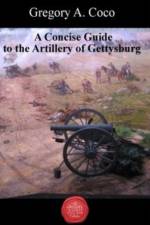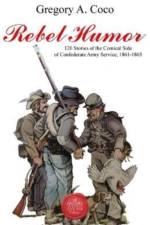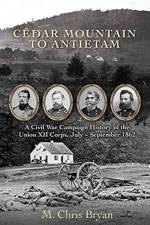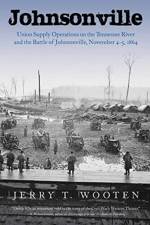av Bradley M Gottfried
351
The Maps of Spotsylvania through Cold Harbor continues Bradley M. Gottfried's efforts to study and illustrate the major campaigns of the Civil War's Eastern Theater. This is the eighth book in the ongoing Savas Beatie Military Atlas Series. After three years of bloody combat with no clear victor in the Virginia theater, President Abraham Lincoln turned to Ulysses S. Grant and promoted him to general-in-chief during the winter of 1863-64. Grant immediately went to work planning a comprehensive strategy to bring an end to the war. He hungered to remain with the Western armies, but realized his place was in Washington. Unwilling to be stuck in an office, Grant joined George Meade's Army of the Potomac. His presence complicated Meade's ability to direct his army, but Grant promised to stay out of his way and give only strategic directives. This arrangement lasted through the Wilderness Campaign, the first action in what is now referred to as the "Overland Campaign."This book continues the actions of both armies through the completion of the Overland Campaign. After the Wilderness fighting, the Army of the Potomac attempted to swing around the left flank of Gen. Robert E. Lee's Army of Northern Virginia and shoot straight for Richmond. The Confederate capital was never the goal; the move was intended to force Lee out into the open, where the larger and well-stocked Union army could destroy it. The head of Lee's army reached Spotsylvania Court House in time to blunt Meade's march and both sides threw up extensive defensive works. Days and men were wasted on fruitless attacks until Col. Emery Upton designed an audacious strike that temporarily penetrated Lee's works. A much larger offensive through the early dawn fog against the "Mule Shoe" tore the line wide open, destroyed a Confederate division, and triggered an entire day of fighting before Lee was able to stabilize his front. More fighting convinced Grant of the folly of further attempts to crush Lee at Spotsylvania and again he swung around the Confederate left flank. The march ignited almost continuous fighting along the North Anna River, Bethesda Church, and Cold Harbor, where this volume ends. This study also included the many cavalry actions, including those at Spotsylvania Court House, Yellow Tavern, Haw's Tavern, and Matadequin Creek. The Maps of Spotsylvania through Cold Harbor breaks down the entire operation into thirty-five map sets or "action sections" enriched with 134 detailed full-page color maps. These cartographic originals bore down to the regimental and battery level and include the march to and from the battlefields and virtually every significant event in between. At least two, and as many as ten maps accompany each map set. Keyed to each piece of cartography is a full facing page of detailed footnoted text describing the units, personalities, movements, and combat (including quotes from eyewitnesses) depicted on the accompanying map, all of which make the Spotsylvania story come alive. This unique presentation allows readers to easily and quickly find a map and text on any portion of the campaign, from the march to Spotsylvania Court House to Cold Harbor. Serious students of the battle will appreciate the extensive and authoritative endnotes and complete order of battle. Everyone will want to take the book along on trips to these battlefields. Perfect for the easy chair or for stomping the hallowed ground, The Maps of Spotsylvania through Cold Harbor is a seminal work that belongs on the bookshelf of every serious and casual student of the battle. Previous titles in this series include: The Maps of Gettysburg (2007), The Maps of First Bull Run (2009), The Maps of Chickamauga (by David A. Powell and David A Freidrichs), The Maps of Antietam (2012), The Maps of Bristoe Station and Mine Run (2013), the Maps of the Wilderness (2016), and The Maps of the Cavalry in the Gettysburg Campaign (2020).


























